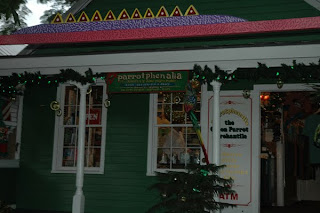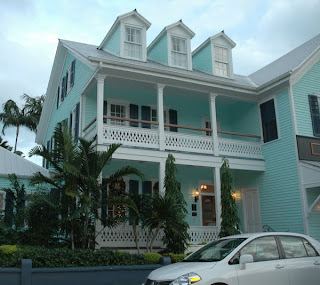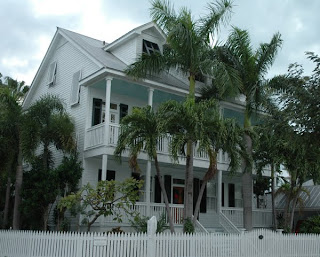Sunday, July 27, 2008
Good-Bye to Dining "Au Velo"
Friday, July 25, 2008
Putting Your Foot Down
Adjusting your saddle so that you can stop with a toe down is mainly about convenience. Some cyclists prefer this method, while others feel that not having their leg 100% straight on the downstroke robs them of power. How do you stop in traffic when cycling for transportation? And is it the method you've always used, or did you develop it after some trial and error?
Wednesday, July 23, 2008
Boy Meets Elk
While doing research for this area, I saw that they had elk here. We haven't seen elk since we were out west, so I was really excited at the thought of seeing them again. And we have Elijah with us, so I thought it would be especially cool if he could see them.
We asked at the resort office where the best place was to see them, and then headed out. We drive to this place and get out and off in the woods we see two huge elk. And because we are so easy, we were freaking out at how cool it was and stood there for the longest time looking at them from a distance.

 I'm not embarrassed in the least that we were so geeky excited over it, because it is cool. Really, really cool to be this close to elk. We're asking Elijah what he thinks and making a big deal about it. He's not real impressed. Then we realize that he can't see from way down there. He was a little more excited when I put him on my shoulders.
I'm not embarrassed in the least that we were so geeky excited over it, because it is cool. Really, really cool to be this close to elk. We're asking Elijah what he thinks and making a big deal about it. He's not real impressed. Then we realize that he can't see from way down there. He was a little more excited when I put him on my shoulders.
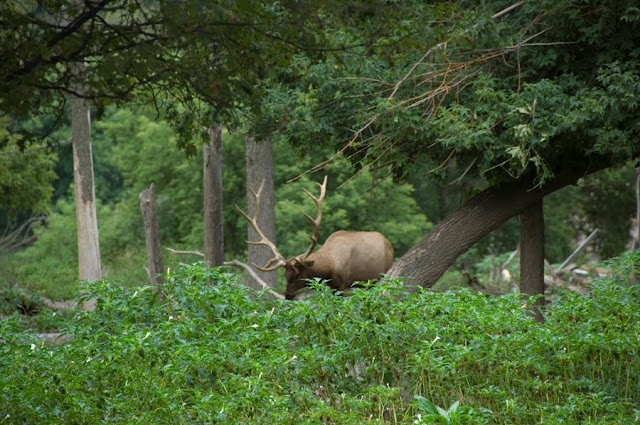 Then Ashleigh and I noticed that way on the other end of this place there appeared to be a group of people doing something with a group of animals. We say that maybe the elk are closer to the fence down there and people are getting to feed them or something. Because Nathan can be a know it all, he says nah...those are deer. We squint and look again and say...uh...I don't think those are deer. If they are, those are some monster deer or something because they are big. And the guy at the office said we could feed them crackers sometimes and we can't do that from here. But we might be able to do it from there. Because I can be pushy, I say...let's go!
Then Ashleigh and I noticed that way on the other end of this place there appeared to be a group of people doing something with a group of animals. We say that maybe the elk are closer to the fence down there and people are getting to feed them or something. Because Nathan can be a know it all, he says nah...those are deer. We squint and look again and say...uh...I don't think those are deer. If they are, those are some monster deer or something because they are big. And the guy at the office said we could feed them crackers sometimes and we can't do that from here. But we might be able to do it from there. Because I can be pushy, I say...let's go!
So we headed out, with a pit stop at K-Mart for crackers, and went to find the spot where maybe we could feed the elk.
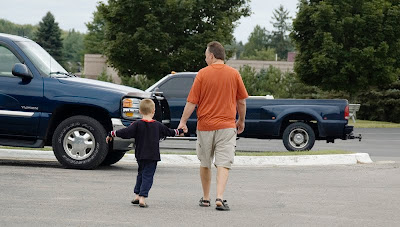 I'm so glad we did because this is what happened there.
I'm so glad we did because this is what happened there.



 In all of about 5 seconds flat Elijah transformed from boy to warrior/man-child/great and mighty hunter. Or something like that. I half expected him to start making Tim Allen noises or something. It was awesome!
In all of about 5 seconds flat Elijah transformed from boy to warrior/man-child/great and mighty hunter. Or something like that. I half expected him to start making Tim Allen noises or something. It was awesome!
 Nathan was trying to help him and he did the teen hand wave that means Pfffttt...I got this one. I am boy, hear me roar! Were the elk large you might ask?
Nathan was trying to help him and he did the teen hand wave that means Pfffttt...I got this one. I am boy, hear me roar! Were the elk large you might ask?
 Yeah, you could say that! Dude rocks is all I have to say!
Yeah, you could say that! Dude rocks is all I have to say!
More tomorrow because there are more pictures that I want to share and I'm not used to daily blogging now so my hand is tired already.
Living the life in Michigan!
We asked at the resort office where the best place was to see them, and then headed out. We drive to this place and get out and off in the woods we see two huge elk. And because we are so easy, we were freaking out at how cool it was and stood there for the longest time looking at them from a distance.

 I'm not embarrassed in the least that we were so geeky excited over it, because it is cool. Really, really cool to be this close to elk. We're asking Elijah what he thinks and making a big deal about it. He's not real impressed. Then we realize that he can't see from way down there. He was a little more excited when I put him on my shoulders.
I'm not embarrassed in the least that we were so geeky excited over it, because it is cool. Really, really cool to be this close to elk. We're asking Elijah what he thinks and making a big deal about it. He's not real impressed. Then we realize that he can't see from way down there. He was a little more excited when I put him on my shoulders. Then Ashleigh and I noticed that way on the other end of this place there appeared to be a group of people doing something with a group of animals. We say that maybe the elk are closer to the fence down there and people are getting to feed them or something. Because Nathan can be a know it all, he says nah...those are deer. We squint and look again and say...uh...I don't think those are deer. If they are, those are some monster deer or something because they are big. And the guy at the office said we could feed them crackers sometimes and we can't do that from here. But we might be able to do it from there. Because I can be pushy, I say...let's go!
Then Ashleigh and I noticed that way on the other end of this place there appeared to be a group of people doing something with a group of animals. We say that maybe the elk are closer to the fence down there and people are getting to feed them or something. Because Nathan can be a know it all, he says nah...those are deer. We squint and look again and say...uh...I don't think those are deer. If they are, those are some monster deer or something because they are big. And the guy at the office said we could feed them crackers sometimes and we can't do that from here. But we might be able to do it from there. Because I can be pushy, I say...let's go!So we headed out, with a pit stop at K-Mart for crackers, and went to find the spot where maybe we could feed the elk.
 I'm so glad we did because this is what happened there.
I'm so glad we did because this is what happened there.


 In all of about 5 seconds flat Elijah transformed from boy to warrior/man-child/great and mighty hunter. Or something like that. I half expected him to start making Tim Allen noises or something. It was awesome!
In all of about 5 seconds flat Elijah transformed from boy to warrior/man-child/great and mighty hunter. Or something like that. I half expected him to start making Tim Allen noises or something. It was awesome! Nathan was trying to help him and he did the teen hand wave that means Pfffttt...I got this one. I am boy, hear me roar! Were the elk large you might ask?
Nathan was trying to help him and he did the teen hand wave that means Pfffttt...I got this one. I am boy, hear me roar! Were the elk large you might ask? Yeah, you could say that! Dude rocks is all I have to say!
Yeah, you could say that! Dude rocks is all I have to say!More tomorrow because there are more pictures that I want to share and I'm not used to daily blogging now so my hand is tired already.
Living the life in Michigan!
Tuesday, July 22, 2008
Batavus Old Dutch: Not What I Expected
If you follow the Suburban Bike Mamablog, you may recognise that this is the fabled silver Batavus Old Dutch that has been the subject of some frenzied discussion due to its fabulous sale price. Vee didn't buy the bike because the frame was too large for her, so being in the neighborhood I hurried to see it. The price was so good that I was considering getting it as a winter bike and sparing my main ride from Boston's salt and snow. Heading to see the Batavus, I was pretty much prepared to take it home. But alas, I left empty-handed.
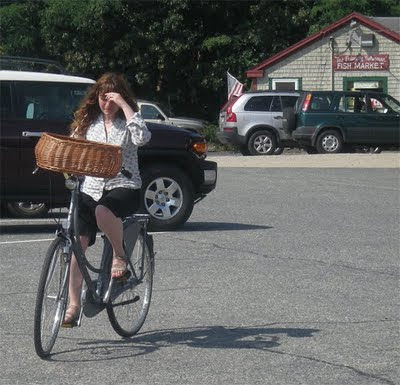 On fist impression the bike looked nice enough (though for some reason the shop fitted it with this strange basket). The bicycle is all silver, including fenders, chaincase and dress-guard.I like silver bikes and the loop-frame looked classic and elegant.
On fist impression the bike looked nice enough (though for some reason the shop fitted it with this strange basket). The bicycle is all silver, including fenders, chaincase and dress-guard.I like silver bikes and the loop-frame looked classic and elegant.
 But a closer examination gave me a different perspective.Theframe is partly welded (as opposed to lugged), and the welds are kind of messy. Unicrown fork, too.
But a closer examination gave me a different perspective.Theframe is partly welded (as opposed to lugged), and the welds are kind of messy. Unicrown fork, too.
 Seat tube.
Seat tube.
 And the "loop" connector. Now, some may be reading this and thinking "So what? Most modern bicycles are welded." True enough. But from a classic Dutch bike that advertises the "old" aspect of Dutch bikes, I would expect a more traditional frame construction.
And the "loop" connector. Now, some may be reading this and thinking "So what? Most modern bicycles are welded." True enough. But from a classic Dutch bike that advertises the "old" aspect of Dutch bikes, I would expect a more traditional frame construction.
But while the frame construction was disappointing, the more serious problem were the components. The front brake had almost zero stopping power - and that's riding around the flat parking lot in dry weather. We adjusted the brake and the bike shop even replaced the brake pads, but there was almost no improvement. Perhaps this had something to do with a combination of a low-end caliper brake and steel rims. Steel rims + caliper brakes = poor braking, especially in wet weather. The coaster brake did have decent stopping power, but was not especially strong either. Since I was thinking of getting this as a winter bike, that would rather defeat the purpose. Downhills might also be scary even in the best weather.
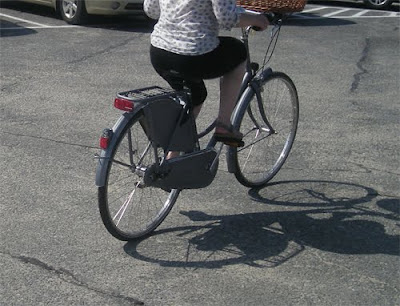 The closer I examined the Batavus Old Dutch, the more details I noticed that made it look cheaply made. The cable guides were plastic clip-ons that were starting to come off in places. The pedals and bell felt flimsy and loose. The chaincase was made of a vinyl cloth-like material apparently prone to yellowing and tearing (as it had both yellowed and torn... and this bike was a floor model that had never seen hard use).
The closer I examined the Batavus Old Dutch, the more details I noticed that made it look cheaply made. The cable guides were plastic clip-ons that were starting to come off in places. The pedals and bell felt flimsy and loose. The chaincase was made of a vinyl cloth-like material apparently prone to yellowing and tearing (as it had both yellowed and torn... and this bike was a floor model that had never seen hard use).
I feel bad piling so much criticism onto this poor bike. I wanted to like it and fully expected to take it home. But the bike I saw did not make sense for me to buy, even at the sale price (which I think reflects its value more so than the retail). That said, the Batavus Old Dutch is sturdy and, from a distance, attractive. If bought at a discount, it could work nicely for someone who wants a Dutch bike for short urban trips and isn't bothered by the issues described here.
 On fist impression the bike looked nice enough (though for some reason the shop fitted it with this strange basket). The bicycle is all silver, including fenders, chaincase and dress-guard.I like silver bikes and the loop-frame looked classic and elegant.
On fist impression the bike looked nice enough (though for some reason the shop fitted it with this strange basket). The bicycle is all silver, including fenders, chaincase and dress-guard.I like silver bikes and the loop-frame looked classic and elegant. But a closer examination gave me a different perspective.Theframe is partly welded (as opposed to lugged), and the welds are kind of messy. Unicrown fork, too.
But a closer examination gave me a different perspective.Theframe is partly welded (as opposed to lugged), and the welds are kind of messy. Unicrown fork, too. Seat tube.
Seat tube. And the "loop" connector. Now, some may be reading this and thinking "So what? Most modern bicycles are welded." True enough. But from a classic Dutch bike that advertises the "old" aspect of Dutch bikes, I would expect a more traditional frame construction.
And the "loop" connector. Now, some may be reading this and thinking "So what? Most modern bicycles are welded." True enough. But from a classic Dutch bike that advertises the "old" aspect of Dutch bikes, I would expect a more traditional frame construction. But while the frame construction was disappointing, the more serious problem were the components. The front brake had almost zero stopping power - and that's riding around the flat parking lot in dry weather. We adjusted the brake and the bike shop even replaced the brake pads, but there was almost no improvement. Perhaps this had something to do with a combination of a low-end caliper brake and steel rims. Steel rims + caliper brakes = poor braking, especially in wet weather. The coaster brake did have decent stopping power, but was not especially strong either. Since I was thinking of getting this as a winter bike, that would rather defeat the purpose. Downhills might also be scary even in the best weather.
 The closer I examined the Batavus Old Dutch, the more details I noticed that made it look cheaply made. The cable guides were plastic clip-ons that were starting to come off in places. The pedals and bell felt flimsy and loose. The chaincase was made of a vinyl cloth-like material apparently prone to yellowing and tearing (as it had both yellowed and torn... and this bike was a floor model that had never seen hard use).
The closer I examined the Batavus Old Dutch, the more details I noticed that made it look cheaply made. The cable guides were plastic clip-ons that were starting to come off in places. The pedals and bell felt flimsy and loose. The chaincase was made of a vinyl cloth-like material apparently prone to yellowing and tearing (as it had both yellowed and torn... and this bike was a floor model that had never seen hard use).I feel bad piling so much criticism onto this poor bike. I wanted to like it and fully expected to take it home. But the bike I saw did not make sense for me to buy, even at the sale price (which I think reflects its value more so than the retail). That said, the Batavus Old Dutch is sturdy and, from a distance, attractive. If bought at a discount, it could work nicely for someone who wants a Dutch bike for short urban trips and isn't bothered by the issues described here.
Sunday, July 20, 2008
Thursday, July 17, 2008
Sand Trails Meet Road Tires
Wednesday, July 16, 2008
Misadventures in the Thaw
Subscribe to:
Posts (Atom)
